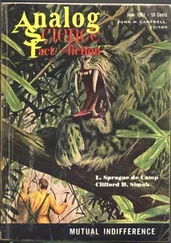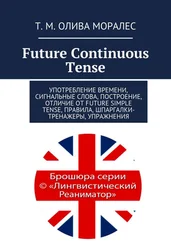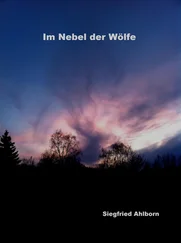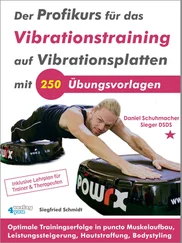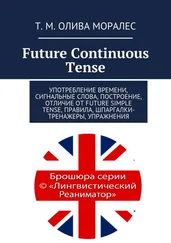Table 1summarizes the test results for the petrophysical and moisture properties as well as the weathering properties of all samples.
The historical buildings in Oaxaca were mostly built with CVO. Delicate parts like ornaments and window sills were built with the softer CAO. CVE was used as a replacement for CVO during different phases of restoration (Fig. 2a).
The most important weathering features in Oaxaca are loss of components, loss of matrix and bursting. The base parts of the buildings often show scaling and flaking accompanied by salt crust formation. Upper wall parts and protruding areas are strongly affected by moisture and form a characteristic organic black crust (Fig. 2b). CVO is dominated by loss of components when pumice clasts dissolved. CAO and CVE are strongly affected by fracturing, when in contact with water (Kück et al. 2020b). CRO and CRE are the only samples which show bedding parallel scaling.
In Mitla most of the building stones are original and mostly in good condition. The southern and eastern side of the buildings have the highest damage intensities linked to high temperature changes during the day of up to 20 °C (Fig. 2c). The northern side experiences a lot of moisture, but the temperature difference during the day is low (3 °C). The western side is the least weathered side.
Petrophysical and moisture properties
The effective porosity of all analyzed tuffs varies from 12 % (MG) to 41 % (CAO). The Mitla tuffs show the lowest values (12–15 %). The sample with the highest matrix density is MR with 2.6 g/cm3, while MG has the lowest density with 2.2 g/cm3 ( Tab. 1). The saturation degree S of the samples ranges from 0.59 (MG) to 0.92 (MR, CVO). After Hirschwald (1912) most samples are weathering and frost resistant except MR and CVO. The pore size distributions were measured for all samples (Fig. 3). It is noticeable, that CVO and MR have almost no capillary pores, but a high share of micropores.
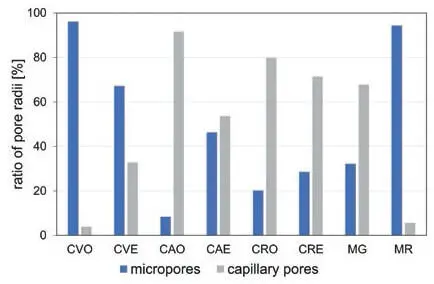
Figure 3:Comparison of the ratio of micropores and capillary pores.
The samples from Mitla show the lowest capillary water absorption (0.7 kg/m2√h–1.7kg/m2√h). The samples from Oaxaca show moderate w -values ranging from 1.0–2.8 kg/m2√h (CV ) to 6.4–8.5 kg/m2√h (CAO). CVO has the highest water vapor diffusion resistance factor μ with 21.9, followed by MR with 19.0. The sample with the lowest water vapor diffusion resistance is CAO with 7.4. Hygroscopic water sorption was measured from 20–95 % rh. The highest sorption value was measured for CVE with 7.75 wt.-% at 95 % rh. The lowest sorption at 95 % rh was measured for CRO with 1.74 wt.-%. Between 20 and 75 % rh all samples show a linear weight increase with varying gradient. Above 75 % rh the curves show a sudden increase in slope. The highest ultrasonic velocities were measured for MR (3.7–3.8 km/s) and CVO (3.2–3.6 km/s). The lowest ultrasonic velocity was measured for CRE (1.6–2.3 km/s).
The tensile strength of all samples varies between 1.3–1.7 MPa (CRE) and 6.4–6.9 MPa (CVO). MR has the highest surface hardness with 528–604 HL followed by CVO (603–632 HL). The lowest surface hardness was measured for CAO with 330–337 HL.56
Table 1:Petrophysical properties and weathering behaviour of the studied samples.

Thermal dilatation was tested in two heating cycles each in both a dry and wet environment. The samples CVO, CVE and CAE show pronounced differences between the first and second heating cycle (Fig. 4). All samples expand during heating and then shrink again during cooling. The samples from Oaxaca and Etla have negative residual strain, especially after the second heating cycle. At about 70–80 °C the samples shrink significantly. The samples from Mitla reach their initial state after cooling and the first and second heating cycle are similar. CAE has the highest thermal expansion with 0.78–0.87 mm/m. The tuff varieties from Oaxaca and Etla have the lowest thermal expansion (0.17–0.22 mm/m).
After two dry heating cycles the samples were saturated with water and heated in two wet heating cycles. After the first hour in a wet environment the samples already showed intense hydric expansion with a maximum of more than 2 mm/m. After that first intense expansion the samples 57underwent a thermohydric dilatation. For thermohydric dilatation CRO and CRE show much higher anisotropies than for just thermal dilatation. The highest thermohydric expansion was measured for CVO (2.90 mm/m) and CVE (1.98–2.25 mm/m). The samples from Mitla have the lowest thermohydric expansion.

Figure 4:Thermal and thermohydric expansion.
The second dry cycle shows a significant decrease of residual strain, with negative values representing thermal contraction. After the first wet heating cycle the samples show a decrease in residual strain. Especially CVO, CVE and CAE show this feature. CAO and CAE do not recover from contraction after the second drying cycle. The Mitla samples are rather unaffected by both thermal and thermohydric dilatation.
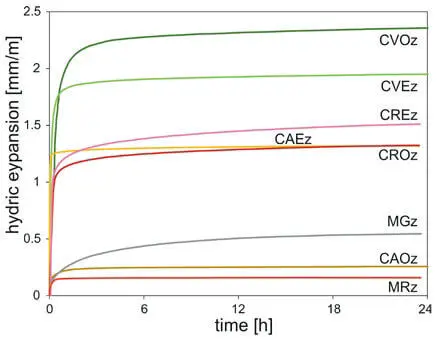
Figure 5:Maximum hydric expansion values.
Figure 5 shows the hydric expansion of all tested samples. CVO expands the most of all samples, when in contact with water. The maximal hydric expansion is reached by CVO in the Z-direction with 2.36 mm/m. The smallest hydric expansion was measured for MR with 0.04 mm/m in the X-direction. The sample with the highest anisotropy is MR with 73 %. Most samples show higher hydric expansion in the Z-direction, except for CAO, CAE and MG. All samples reach maximal hydric expansion already during the first hours.
The effect of salt weathering on all samples is presented in Figure 6. Most of the samples show a weight increase at the beginning of the salt bursting test. The most resistant sample is MR, while CRE, CRO and CVO show low resistance towards salt weathering. Table 1shows the number of salt cycles until at least 30 % weight loss is reached.
Discussion and conclusion
The combination of the mapping results and the experimental tests allow an evaluation of the rocks. The samples from Mitla are in general very resistant to most forms of weathering. They have low porosities and low w -values with low hydric 58and thermohydric dilatation. Both MG and MR are relatively resistant to salt weathering compared to the other analyzed tuff samples.
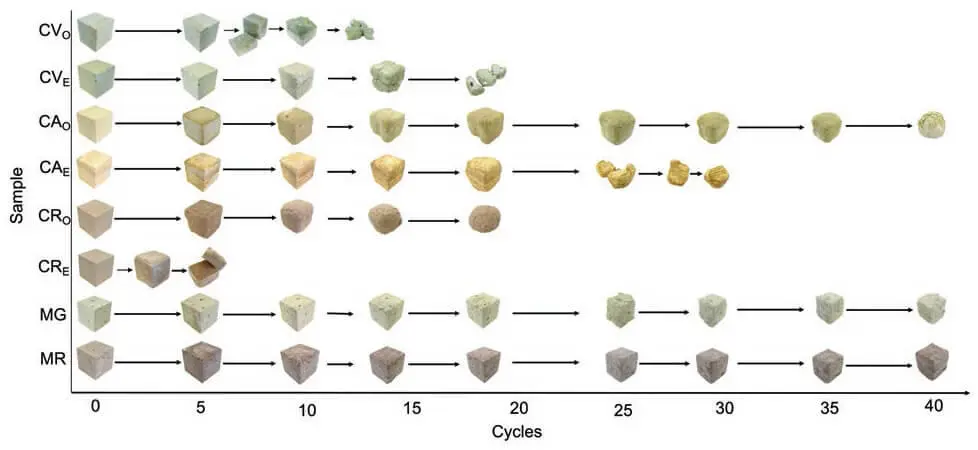
Figure 6:Photographic documentation of the salt bursting test.
The pore space has a very important impact on the process of salt weathering. A general dependence between the share of micropores and the number of salt cycles could be observed in the samples. MR and CVO are the strongest samples with high surface hardness, ultrasonic velocities, tensile strength and low porosity with almost no capillary pores present. CVO is not very resistant to salt weathering and shows the highest hydric expansion and strong thermohydric dilatation with non-reversible changes due to the dehydration of clay minerals. This makes CVO less suitable as a building stone. Nevertheless, CVE is even more affected by moisture than CVO. With the highest sorption, high hydric expansion and low tensile strength as well as low ultrasonic velocity CVE is strongly affected by loss of components and fracturing/bursting. CAO and CAE are less affected by component loss and show strong back weathering and fracturing due to a high amount of clay minerals, which makes the yellow tuff varieties rather soft samples. The red tuffs (CRO and CRE) are the only ones which show anisotropic behavior in the weathering features that correlate with relatively high anisotropic properties.
Читать дальше






